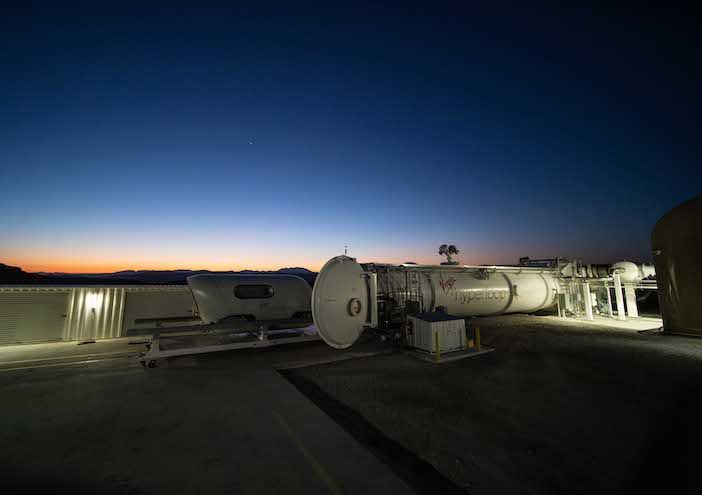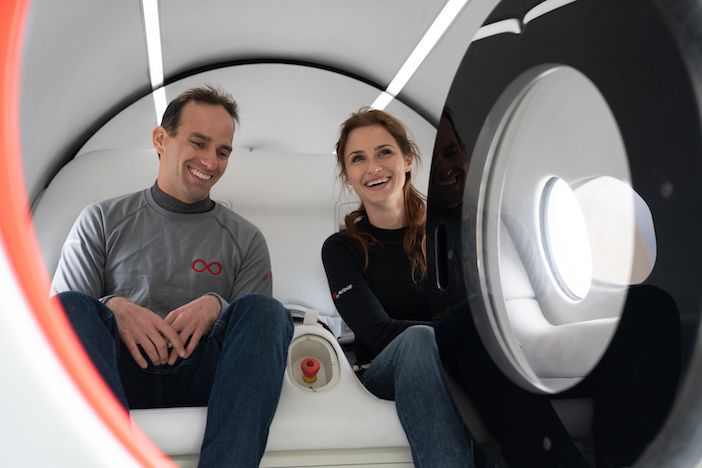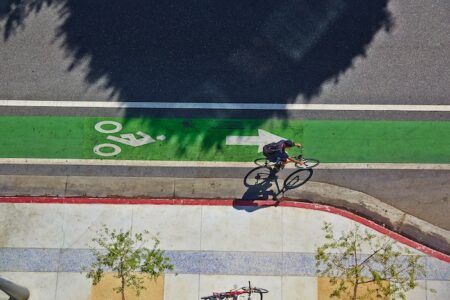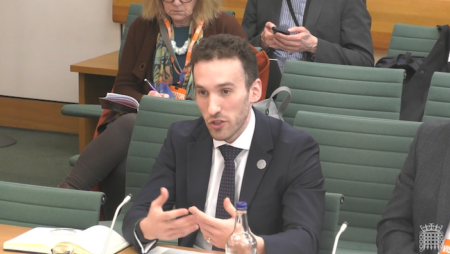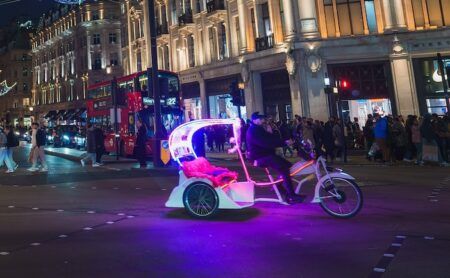Yesterday (8 November 2020) in the Nevada Desert, Virgin Hyperloop employees Josh Giegel and Sara Luchian (pictured) made history by becoming the first humans to travel by hyperloop.
The company’s co-founder and CTO and its director of passenger experience, were the first people in the world to ride on this new form of transportation. The test took place at Virgin Hyperloop’s 500m DevLoop test site near Las Vegas, where the company has previously run over 400 un-occupied tests. The journey took just 15 seconds, reaching 107mph (172km/h). In the future it is hoped hyperloop will reach speeds of more than 600mph (1,000km/h).
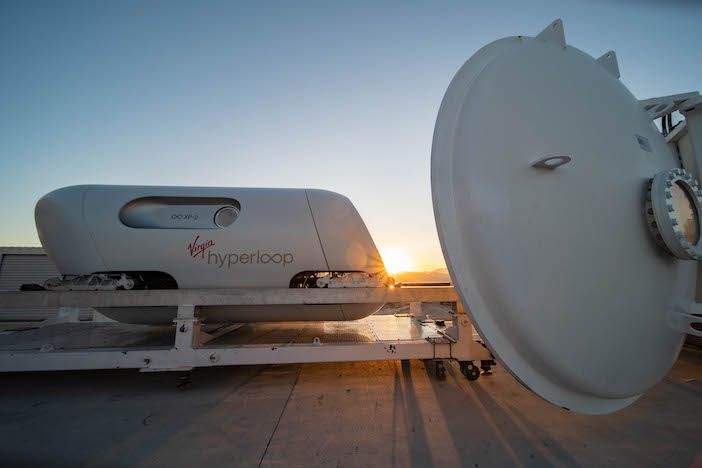
“When we started in a garage over six years ago, the goal was simple – to transform the way people move,” said Giegel. “Today, we took one giant leap toward that ultimate dream, not only for me, but for all of us who are looking towards a moonshot right here on earth.”
“Hyperloop is about so much more than the technology. It’s about what it enables,” said Luchian. “To me, the passenger experience ties it all together. And what better way to design the future than to actually experience it first-hand?”
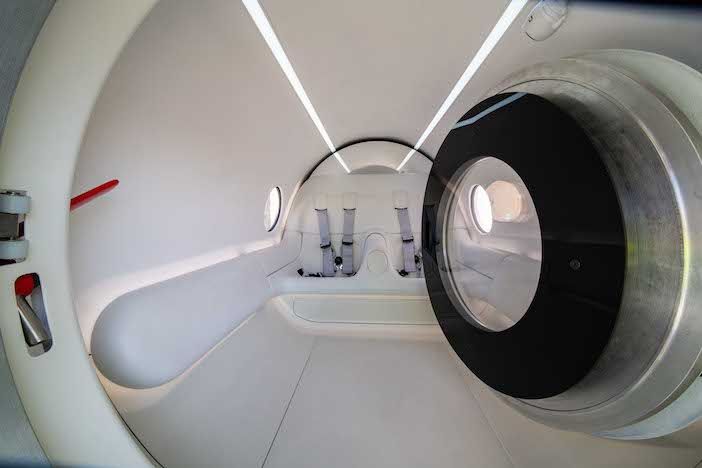
“For the past few years, the Virgin Hyperloop team has been working on turning its ground breaking technology into reality,” said Sir Richard Branson, founder of the Virgin Group. “With today’s successful test, we have shown that this spirit of innovation will in fact change the way people everywhere live, work, and travel in the years to come.”
The testing campaign, from the beginning stages all the way through to today’s successful demonstration, was overseen by the industry-recognized independent safety assessor (ISA). Having undergone a rigorous and exhaustive safety process, the XP-2 vehicle demonstrates many of the safety-critical systems that will be found on a commercial hyperloop system and is equipped with a state-of-the-art control system that can detect off-nominal states and rapidly trigger appropriate emergency responses.
“I can’t tell you how often I get asked ‘is hyperloop safe?,’” said Jay Walder, CEO of Virgin Hyperloop. “With today’s passenger testing, we have successfully answered this question, demonstrating that not only can Virgin Hyperloop safely put a person in a pod in a vacuum environment, but that the company has a thoughtful approach to safety which has been validated by an independent third party.”
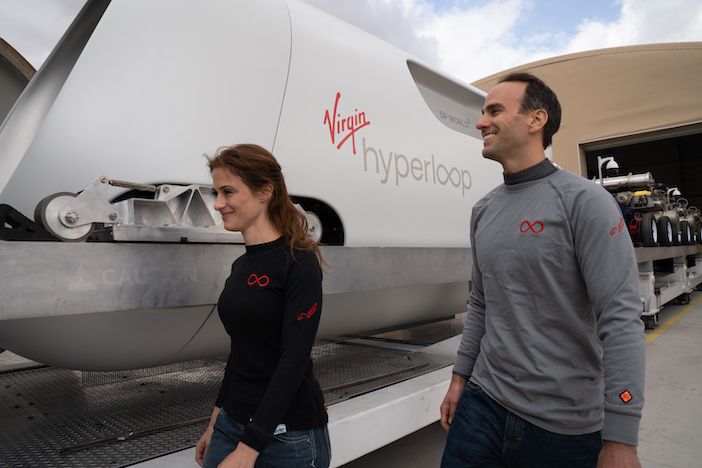
This announcement builds off of significant momentum on the regulatory front. Just last month, Virgin Hyperloop unveiled West Virginia as the location for the Hyperloop Certification Center (HCC). In July 2020, the US Department of Transportation (USDOT) Secretary Elaine Chao and the Non-Traditional and Emerging Transportation Technology (NETT) Council unveiled the guidance document on a clear regulatory framework for hyperloop in the United States. This historic announcement not only provides a pathway for hyperloop regulation and deployment in the US, but also establishes hyperloop’s eligibility for federal funding for projects.
This federal momentum, combined with the advancements at the HCC and the historic safety demonstration achieved with this test will pave the way for the certification of hyperloop systems around the world – a key step towards commercial projects.
